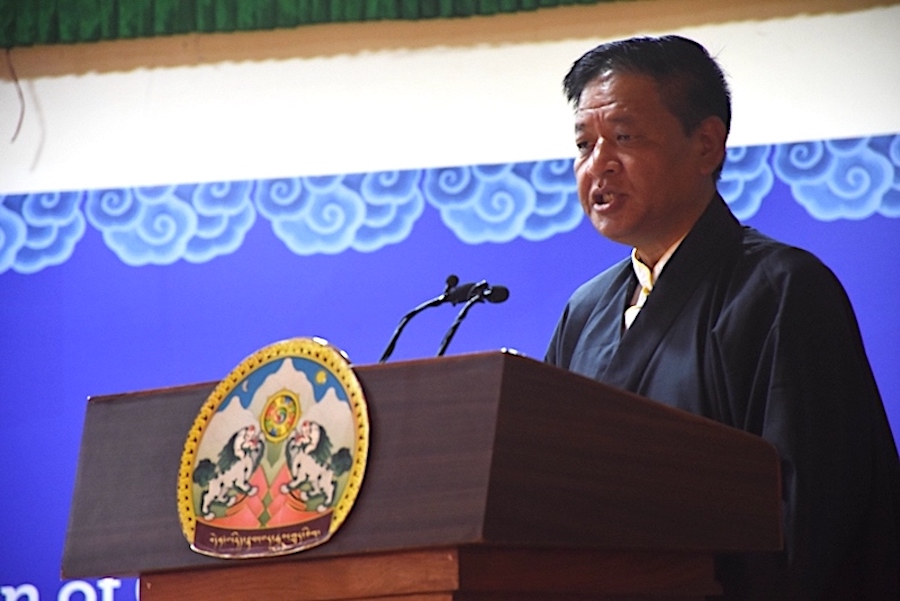By NIRMALAYA BANERJEE
Nathula. 1954. A cold morning. Motilal Lakhotia and Dip Chand Agarwal leave for Yatung, a trade post across the border in Tibet with their modest cargo. Their mode of travel? Mules — a mule track is all there is for the 52-km journey from Gangtok to Nathula, and onwards to Lhasa.
From Gangtok to Lhasa would be a march of about 20 days. The dealings would be in the barter system. Sometimes the Tibetans pay in silver coins, as both gold and silver were available in Tibet.
Gangtok. July 4. 2003. Lakhotia and Agarwal, old and weathered, reminisce about the good old days when the famed Silk Route was still a flourishing trade circuit for the adventurous.
“In those days, trade flourished over the Nathula Pass and the Jelepla Pass despite the absence of a trade agreement,” says Agarwal. Adds Lakhotia: “In the days of our forefathers, caravans from Tibet used to arrive in Gangtok and Kalimpong once a year, and we trusted our goods to them.”
The volume of trade increased with the arrival of the Chinese in the plateau in 1954. The Tibetans wanted food items, the Chinese soldiers wanted foreign wristwatches and fountain pens.
“At Yatung, 28 km from Nathula, we stayed in rented houses,” recalls Lakhotia. “Sometimes, there were 200 traders from Sikkim and Bengal staying.” Agarwal ran a shop where he booked orders and delivered supplies.
“I used to speak Tibetan fluently and learnt Chinese as well.” The items of trade? Woollen and cotton clothes, groceries, medicines,spice and salt from India. Potato seed, yak tail, raw wool and Chinese silk from Tibet.
Trade ended in July 1961, following the worsening of relations with China and the departure of Indian envoys from Tibet. Things reached a standstill after the escape of the Dalai Lama to India. But the duo recall how one of their colleagues had gone back to Yatung in 1997 to claim money he had deposited in a Chinese bank in 1961.
Today, the traders are upbeat again and are making inquiries about the re-opening of the trade route. “I may be 76-years, but we are old hands in this business, and we should get priority when trading resumes,” says Agarwal.
Nathula. July 5. Prime Minister Atal Behari Vajyapee may have signed an MoU on border trade with China here, but the real picture isn’t quite rosy. Major improvements in infrastructure will be necessary before trade can resume.
Topping the list would be an upgradation of the road from Gangtok to Nathula. The present road, maintained by the Border Roads Organizaton and catering primarily to the Army, barely allows two vehicles to pass simultaneously.
The last stretch, from Sherathang to Nathula, a distance of about 10 kms, allows only one-way traffic, controlled by the military police. With trade growing, and heavy vehicles like diesel tankers coming up in large numbers, managing traffic could be a major problem.
Also, there are a few sinking zones and landslide prone areas, and at stretches, drivers of vehicles going downhill have to depend entirely on their brakes; even a slight error can mean a sheer drop of a few hundred feet.
The fact that within a distance of 50 kms, one climbs 9,000 feet gives an idea of the gradient of the road. For the last half kilometre before the border, there is no road. Intelligence reports say there is no road for a similar stretch on the other side of the border as well.
There are other infrastructure requirements which would have to be looked into: parking places for goods vehicles, customs and immigration stations, warehouses for goods, cold storages for perishables and accommodation for traders who would have to stay overnight.
Nevertheless, people in the Nathula area are upbeat about the prospects. “It will be back to business,” enthuses shopowner Ghuma at 17th mile. Bimla at Tsongo pointed out that trading would mean more jobs for locals as porters and hotel owners.
Truly, the winter of discontent would soon be over.









